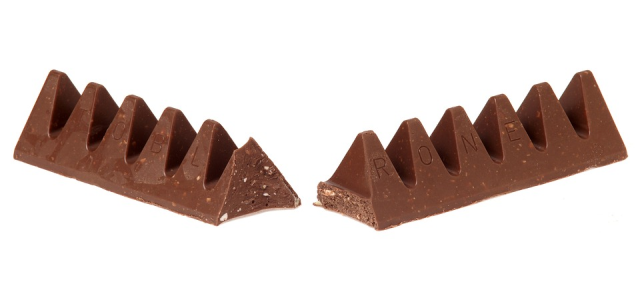 To protect the added value of any product Made in Switzerland, Of Switzerland, direct or indirect references to Switzerland or showing the Swiss white cross on a red background, the criteria for the use of such indications of source had been clarified and their protection reinforced. The “Swissness” legislation went adopted: the law on trademark protection has been amended, the law on the protection of public coats of arms revised. These regulations entered into force on 01/01/2017.
To protect the added value of any product Made in Switzerland, Of Switzerland, direct or indirect references to Switzerland or showing the Swiss white cross on a red background, the criteria for the use of such indications of source had been clarified and their protection reinforced. The “Swissness” legislation went adopted: the law on trademark protection has been amended, the law on the protection of public coats of arms revised. These regulations entered into force on 01/01/2017.
According to the Federal Act on the Protection of Trademarks and Indications of Source* of 28 August 1992 (Status of 01/01/2022), Article 47, indications of source (“provenance”) are direct or indirect references to the geographical origin of goods or services, including references to their characteristics or the quality associated with their origin. It is among others prohibited to use incorrect indications of source or denominations that may be confused with an incorrect indication of source. With Article 48, indications of source for goods are considered to be correct if the requirements under Articles 48a to 48c are fulfilled. Any additional requirements such as compliance with manufacturing or processing principles or quality requirements that are customary or prescribed in the place of origin must also be fulfilled. In each individual case, all requirements are to be determined according to the understanding of the relevant public, and where applicable, in accordance with their influence on the reputation of the goods concerned. The place of origin or processing for Swiss indications of source for natural products and foodstuffs is the Swiss territory and customs union areas. Any possible act misleading consumers in Switzerland remains reserved.
The Trademark Protection Act divided goods into three categories. Article 48a regulates Natural products for which the place of harvest is the key criteria. Article 48c regulates Other products, in particular industrial products. The origin of such other products corresponds to the place where at least 60% of the manufacturing costs are incurred. The costs in and out are detailed in this provision. The indication of source must correspond to the place where the activity, which gave the product its essential characteristics, took place. An essential manufacturing step must have been carried out at this place. Article 48b on Foodstuffs: The origin of a foodstuff within the meaning of the Foodstuffs Act of 9 October 1992 is the place from which at least 80 % of the raw material weight that makes up the foodstuff comes from. For milk and dairy products, the weight of milk as the raw material must equal 100%. Excluded from the calculation are natural products which, due to natural conditions, cannot be produced at the place of origin; natural products that are temporarily not available in sufficient quantities at the place of origin. For the calculation, all raw materials for which the domestic self-supply rate is at least 50% must be taken into account. Where the raw material self-supply rate is 20–49.9 %, only half of the raw materials are to be taken into account. Where the raw material self-supply rate is less than 20%, the raw materials may be excluded from the calculation. In addition, the indication of source must correspond to the place where the processing, which has given the foodstuff its essential characteristics, has taken place. The requirements set out in Articles 48a-48c do not apply by exception in certain circumstances. Art. 49a stipulates that indications of source in advertising are correct if the origin of all of the products and services advertised corresponds to Articles 48 (re Indications of source for goods) and 49 (for services).
Considering these regulations from the angle of the announced geographical delocalisation of a part of the Toblerone Swiss chocolate production outside of Switzerland in the next months, any Swiss indication of source e.g. “Swiss chocolate”, “of Switzerland”, “Made in Switzerland”, the Matterhorn (the world known “Cervin”) imagery, shall have to be removed for these chocolate products, when their provenance is not Switzerland anymore.
Currently, the website https://www.toblerone.ch states “Toblerone, invented in Switzerland in 1908, is still 100% exclusively produced in the Toblerone factory Bern-Brünnen (Switzerland)”. It shows packaging with “of Switzerland”, “Swiss chocolate”, the Cervin imagery. Such packaging is on shelves in Switzerland.
Simultaneously, we also find on shelves new packaging whereby “SWISS MILK CHOCOLATE” is replaced by “MILK CHOCOLATE” (Image 1), “OF SWITZERLAND” disappeared, showing instead “ESTABLISHED IN SWITZERLAND 1908” (Image 2) which seems legally compliant. “Made in Switzerland” (Image 3) still appears after the list of ingredients & mandatories.

The right to “Made in Switzerland” stays when all the steps in the manufacturing process take place in Switzerland.
The Cervin imagery  is adjusted to:
is adjusted to:  & the bear in it seems smaller. With “a”/”the” mountain, the side introduces signature of Mr. Tobler (founder of Toblerone chocolate-1908):
& the bear in it seems smaller. With “a”/”the” mountain, the side introduces signature of Mr. Tobler (founder of Toblerone chocolate-1908):


